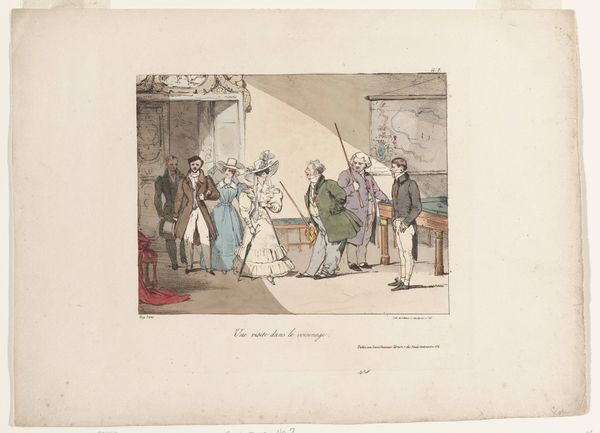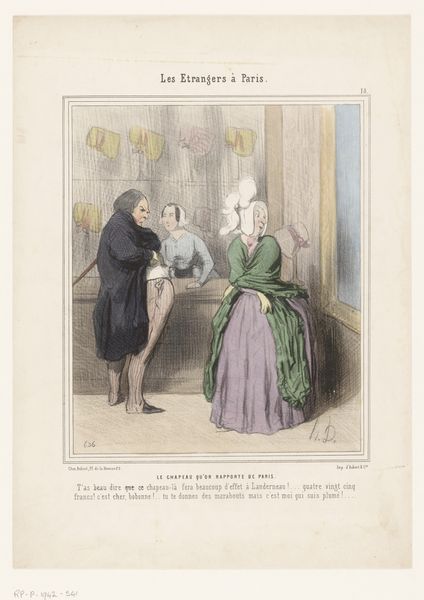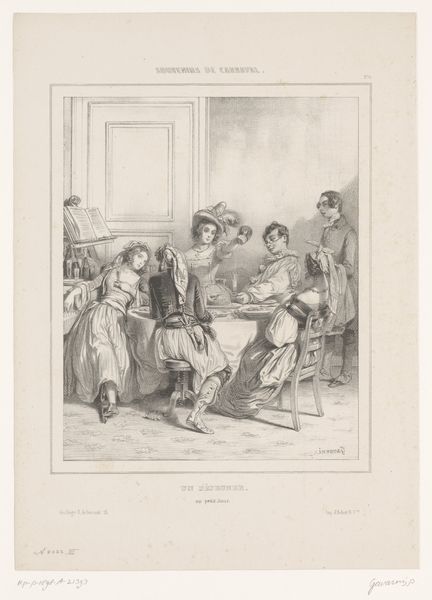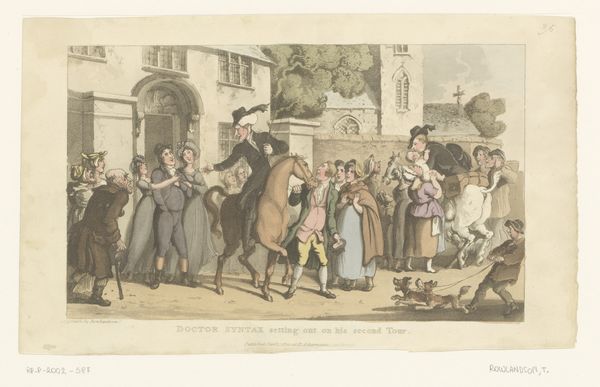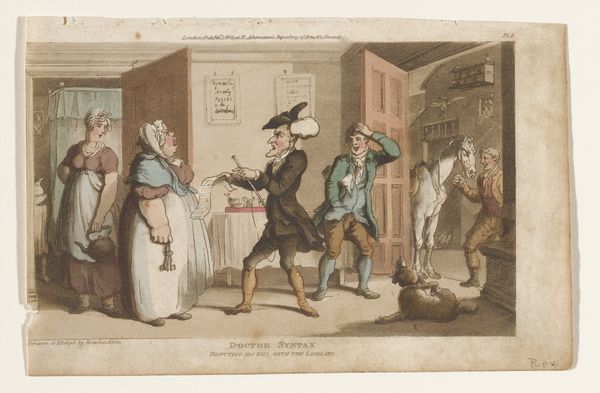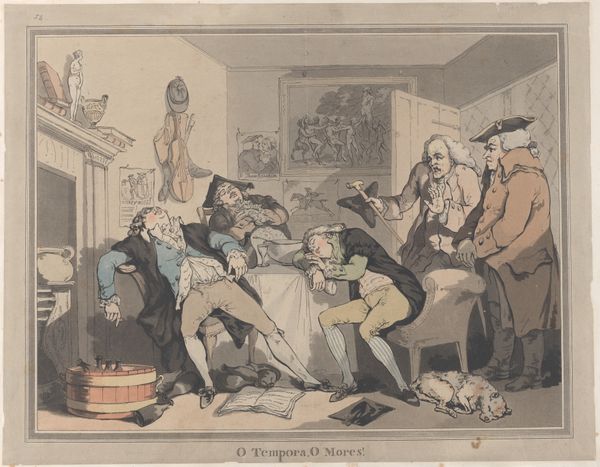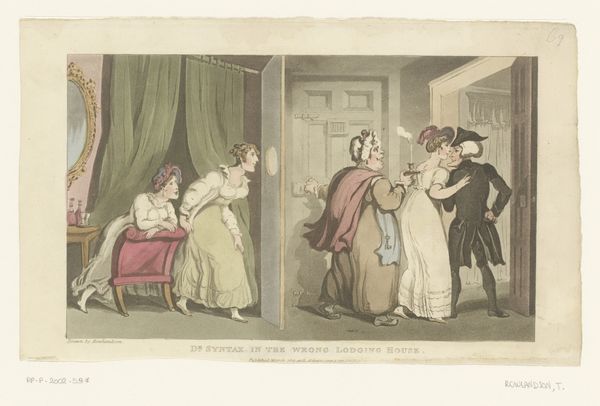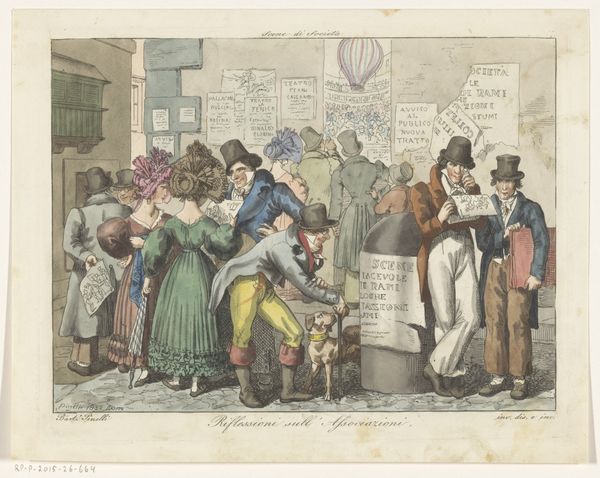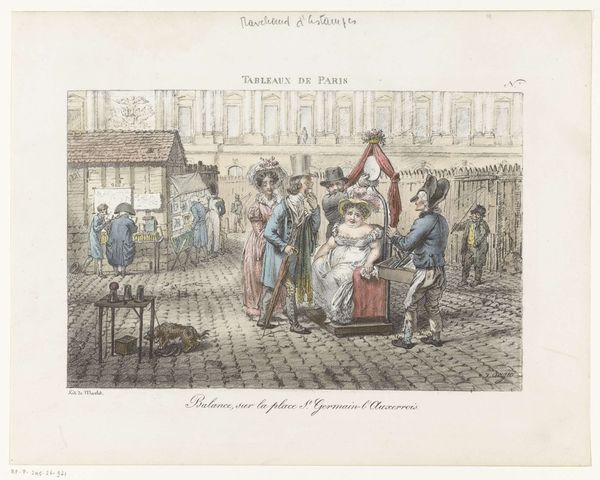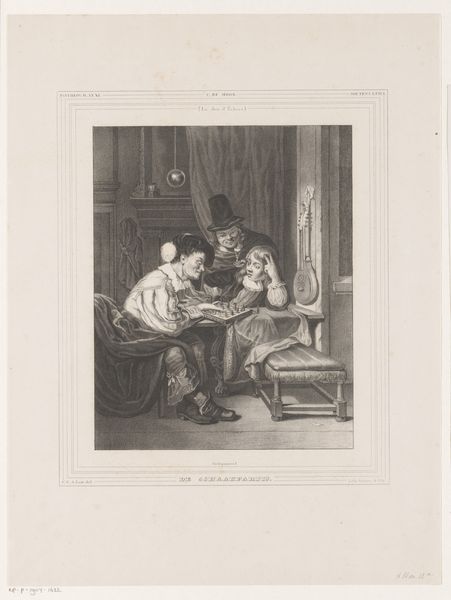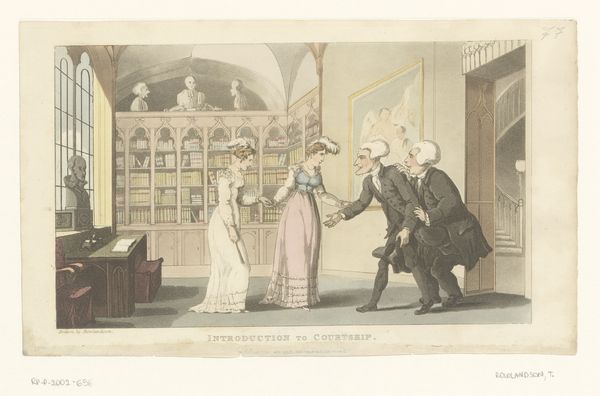
print, engraving
#
narrative-art
# print
#
caricature
#
caricature
#
figuration
#
romanticism
#
genre-painting
#
history-painting
#
engraving
Dimensions: height 229 mm, width 280 mm
Copyright: Rijks Museum: Open Domain
Editor: So, here we have "Ruzie in een boekhandel," which translates to "Argument in a bookstore," a print made before 1827 by Robert William Smart. It looks like an engraving, and honestly, it's pure chaos! Everyone seems to be yelling at each other. What stands out to you? Curator: Immediately, I’m drawn to the context of its production. Engravings like these weren't "high art" necessarily; they were commodities. Cheaply made for wide consumption. What does this tell us about the intended audience, and the message the artist was trying to convey, beyond just the image itself? Editor: I suppose that makes sense. It's labeled as both narrative art and caricature; it probably was a kind of meme for the time, mass-produced for public consumption. So how does focusing on its production method influence how we read this “meme”? Curator: Precisely! Notice the crowded composition and the exaggeration of the figures’ expressions. These were strategic choices made considering the limits of engraving as a medium and their ability to quickly and broadly communicate an idea. What power does this give to a creator, in a space where there are less and more accessibility based on class? Editor: Right, they’re maximizing visual impact with a cost effective medium. And because it was mass-produced, maybe it aimed to be controversial or spark public debate through exaggerated characters, knowing that everyday folks could buy and share them, fueling the discussion. It makes the material matter quite relevant. Curator: Exactly. So, how does understanding the material and social conditions surrounding this print’s creation change your initial perception of it? Editor: I see it less as a snapshot of a specific event, and more as a deliberate attempt to engage with a larger audience using accessible means. It emphasizes the historical moment's reliance on image culture to deliver biting commentary. It’s like the printing press was early social media! Thanks; I really appreciate the new perspective! Curator: And I appreciate you prompting me to delve into the art’s socioeconomic environment, revealing a much deeper richness in its message and execution!
Comments
No comments
Be the first to comment and join the conversation on the ultimate creative platform.
